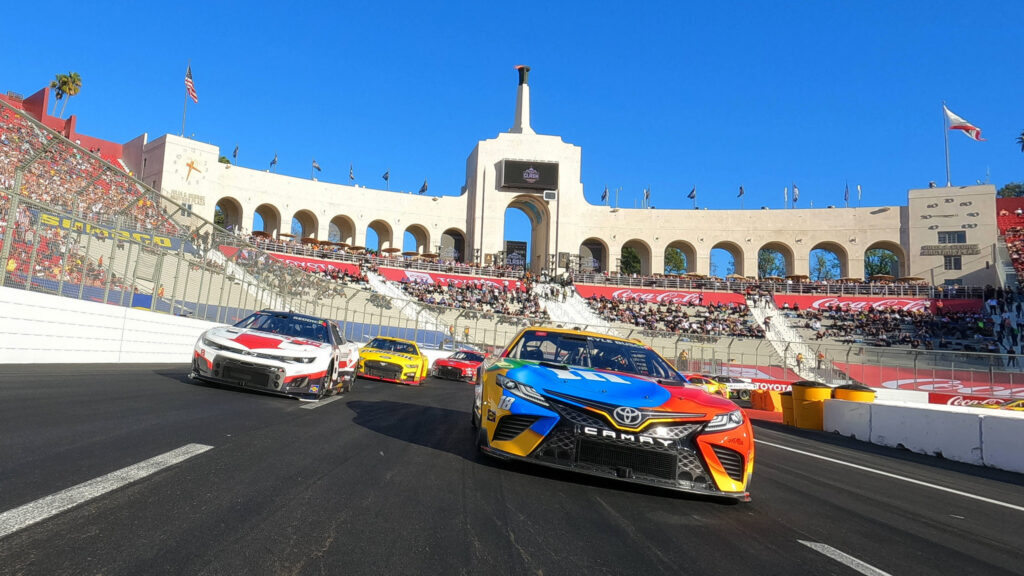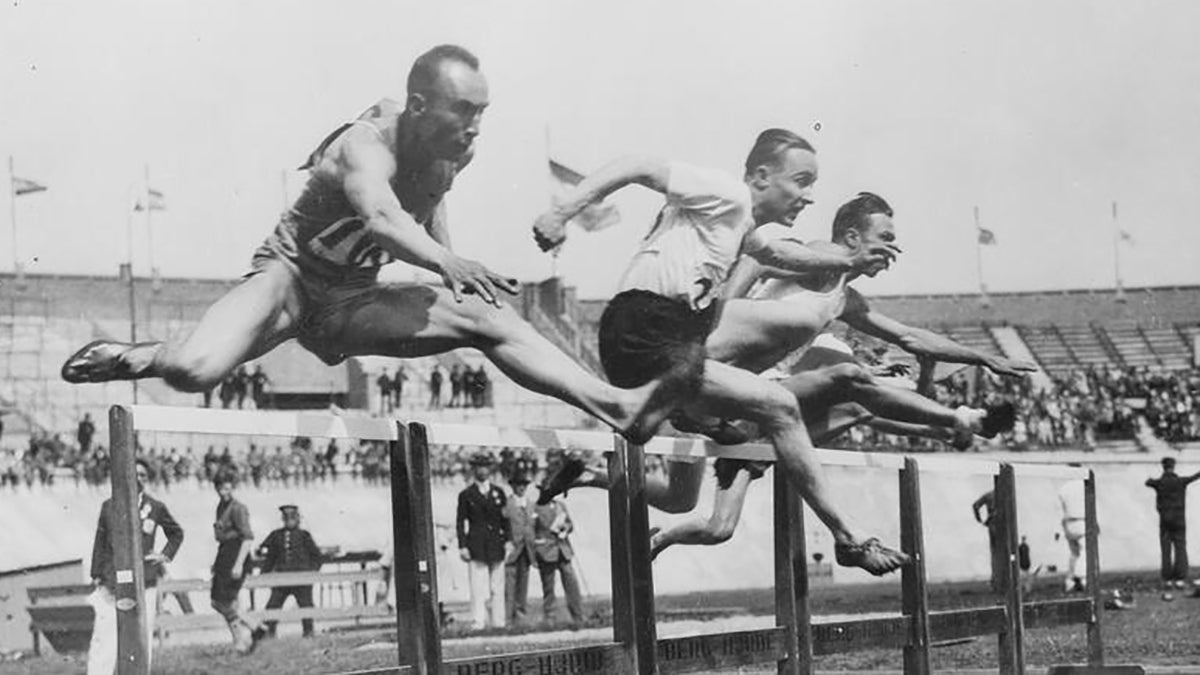From the Olympics to NASCAR, reliving the Los Angeles Memorial Coliseum’s ‘unmatched’ 100-year history

The iconic home of USC Trojan football has seen an unparalleled number of athletic and world events.
When construction began on the Los Angeles Memorial Coliseum in 1921, the community had three aims in mind: a centrally placed, huge event space, a home for USC football, and a memorial to World War I veterans. It’s safe to conclude that 100 years later, the stadium has met those objectives and more.
“Most people probably only know the Coliseum as the home of USC Trojan football or the host of the Olympics, but it has also been the centerpiece of any type of live event or gathering you could possibly think of,” said Nick Hanneke, the Coliseum’s manager of event management.
The stadium has hosted Super Bowls, National Championships, and the World Series. It has appeared in numerous films and television shows and has hosted musical superstars such as the Rolling Stones, U2, and Bruce Springsteen. It is where presidential nominee John F. Kennedy delivered his 1960 Democratic National Convention acceptance speech, and Pope John Paul II held mass during his 1987 visit to Los Angeles. In 1984, the United States government listed the stadium as a National Historic Landmark.
As the world looks to Paris for the 2024 Olympic Games, many involved with the Coliseum are looking ahead to 2028. L.A. will once again welcome the world, but it will also mark a milestone: the stadium will be the first to host three Olympic Games ceremonies as well as track and field events.
“The Coliseum is obviously historic, and its long and storied past creates an environment with so much character and charm that cannot be replicated,” Hanneke told reporters. “Very few venues worldwide can boast such an impressive résumé.”
Hosting the Olympic Games

Los Angeles was chosen as the host city for the 1932 Olympic Games on April 9, 1923, over a month before the Coliseum’s construction was completed and after the Olympic bid promised a new stadium to hold the Games. Nearly a decade later, 101,022 people attended the opening ceremonies of the Los Angeles Olympic Games. According to the Coliseum’s official records, 1.2 million fans from around the world attended the 1932 Los Angeles Olympic Games, which was roughly the city’s population at the time. These Games also saw the introduction of the Olympic Village for visiting competitors, as well as the three-tier medal podium.
Just over 50 years later, in 1984, the Coliseum hosted its second Olympic opening ceremony, becoming the first venue to do so. To celebrate the Games, composer John Williams composed the “Olympic Fanfare and Theme,” often known as the “Los Angeles Olympic Theme” at the time. The composition has become one of the most well-known pieces of theme music in sports history.
“The whole building has an aura,” said Anthony Anaya, the Coliseum’s sports field supervisor. “Being on the grass seems like sacred ground. You feel as if you’re a part of something far bigger than yourself.”
With Los Angeles ready to host its first Olympic Games in nearly 40 years, the Coliseum will once again be at the heart of the sporting world in 2028, albeit with upgrades. The stadium received substantial renovations in 2019, including the construction of the seven-story Scholarship Club Tower, which features luxury suites, loge boxes, club seats, a state-of-the-art press box, and the 1923 Club, a rooftop hospitality deck with a 360-degree view of Los Angeles.
“The renovations completed in 2019 helped bring the Coliseum up to par with many newly constructed venues — there’s that mix of old infrastructure with new, cutting-edge renovations,” Hanneke told reporters.
The original home of L.A. professional football and baseball
Although the Coliseum has become synonymous with USC football, most sports fans remember it for its professional football past outside the Cardinal and Gold. The stadium has hosted the Los Angeles Rams, Raiders, and two Super Bowls.
The Rams, Los Angeles’ first professional football team, began playing in the Coliseum in 1946, after moving from Cleveland. That same year, the Los Angeles Dons of the All-America Football Conference began playing at the Coliseum. The Dons played in the Coliseum until 1949, when the league merged with the National Football League, and the franchise became the Rams. The latter would call the Coliseum home until 1980, when the Rams relocated to Anaheim.
The Coliseum had two years without a professional football team after the Oakland Raiders relocated to Los Angeles in 1982, followed by the L.A. Express of the upstart United States Football League in 1983. The Express and the USFL ceased operations in 1986, and the Raiders moved to Oakland in 1995, leaving the Coliseum without professional football until the Rams relocated to Los Angeles from St. Louis in 2016.
“As a groundskeeper, just thinking about all the college and NFL teams who have played on our field is incredible,” Anaya told the cheering crowd.
The Coliseum is well-known as one of the top stadiums for collegiate and professional football, but it also contains one of Los Angeles’ most popular non-football sports franchises. Before Dodger Stadium was built in 1962, the Dodgers called the Coliseum their first home in Los Angeles after relocating from Brooklyn in 1958. The Dodgers won the 1959 World Series over the Chicago White Sox, and the Coliseum hosted yet another major sporting event.
“The depth and array of events that the Coliseum has, can or will host is nearly unparalleled,” Hanneke stated to the gathering.
Starting the engines

Converting the Coliseum’s field to support several sports, each with differing field dimensions, is difficult enough. However, in 2022, the Coliseum crew took that concept to new heights when the field was transformed into a racetrack to host its inaugural NASCAR event.
The Busch Light Clash is a demonstration event that begins each NASCAR season. For the three races staged in the Coliseum in 2022, 2023, and 2024, the facility had to be outfitted with a temporary quarter-mile track, NASCAR’s smallest track. Joey Logano won the first-ever Clash at the Coliseum in 2022, defeating Kyle Busch after 150 laps, and the stadium added another professional sport to its outstanding resume.
“We’ve hosted so many different events here in 101 years,” Anaya exclaimed. “Our building’s history is truly unmatched.”





